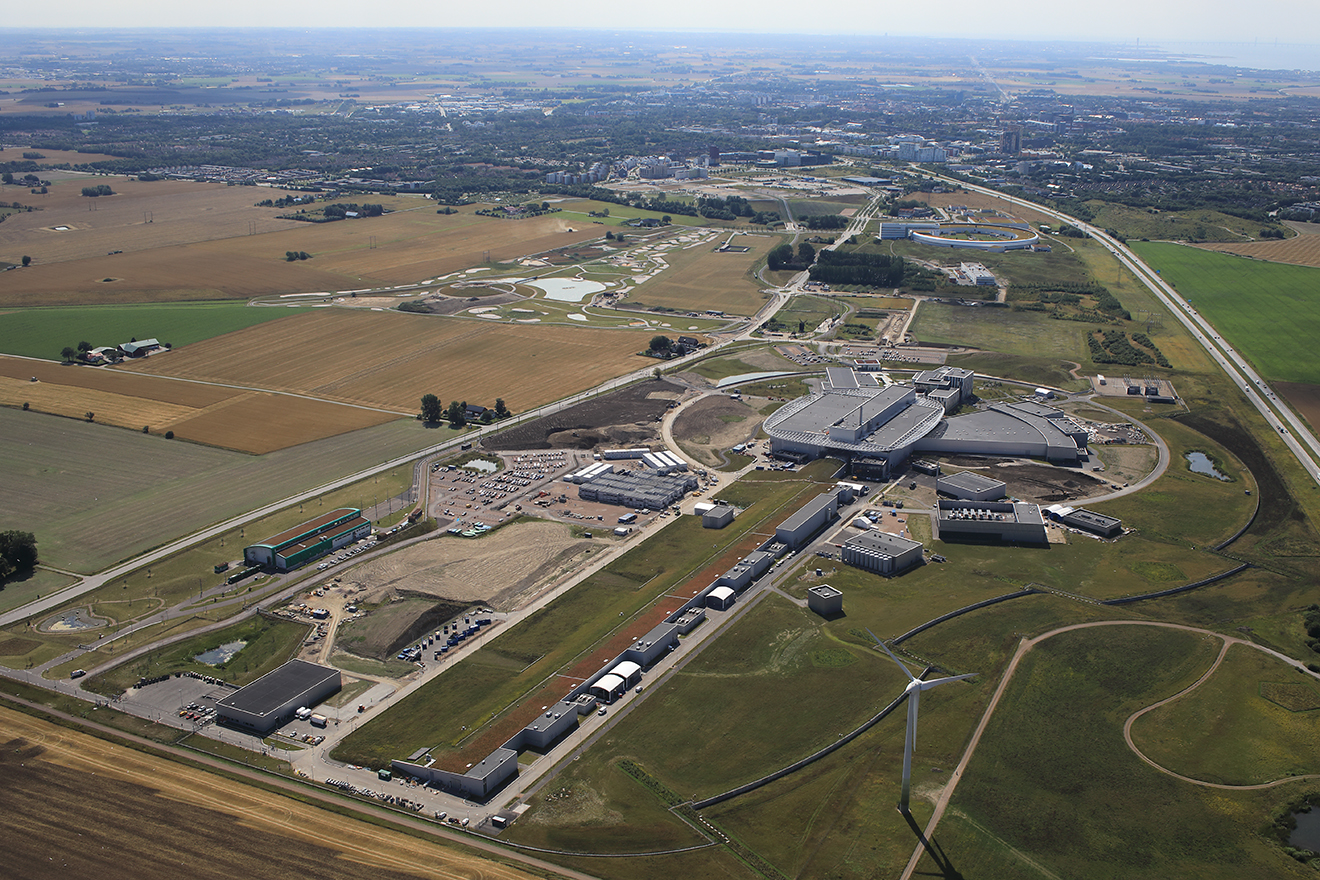The European Spallation Source (ESS) is a unique materials science research facility in Lund, based on the world’s most powerful neutron source. The facility is under construction, and the plan is to start delivering research in 2025.
ESS is an international research infrastructure with 13 member states across Europe. Sweden is the host country together with Denmark. ESS’ data centre, DMSC, is located in Copenhagen.
ESS is a multidisciplinary research facility, which will be generating up to 100 times more neutrons for research than today’s leading facilities of a similar type. The unique performance level of ESS opens the door to new research in a number of fields, and enables smaller samples, faster measurement and more complex experiments than are currently possible.
Research at ESS
At ESS, researchers from around the world will be able to study different types of material at atomic and molecular level, in order to understand their structure and function. Research using neutrons is particularly suitable for fragile samples, such as proteins and living materials, and for investigating magnetic properties. A unique feature of neutrons is also that they can ‘see’ hydrogen, which plays a crucial role in nearly all biological processes.
ESS will open the door for research breakthroughs in areas such as
- medicine and health
- energy and the environment
- climate and transport
- food
- cultural heritage.
MAX IV is a Swedish national synchrotron light facility in Lund. With the help of an accelerator and two storage rings producing intensive and well-focused X-ray beams, researchers can see what was previously invisible.
At MAX IV, researchers from business and higher education institutions in areas as widely differing as biology, physics, chemistry, environmental science, geology, engineering, pharmaceuticals and cultural heritage can study different materials down to atomic level.
The MAX IV laboratory was opened in 2016 and is one of the world’s brightest synchrotron light research facilities. The research facility is a further development of the various MAX facilities that have existed at Lund University for many years. The high quality of the light beam means that molecular structures and different materials can be investigated in more detail than previously.
MAX IV consists of a linear accelerator that in its extension has a hard X-ray beamline for short (down to 100 femtoseconds) and very intensive X-ray pulses, plus two storage rings operated at energy levels of 3.0 GeV and 1.5 GeV respectively. The characteristics of the X-ray radiation at the MAX IV facility are largely due to the magnet design developed at the facility. When the facility is fully completed, there will be room for up to 25 beamlines at the two storage rings.
Research at MAX IV
At MAX IV, researchers can study materials molecule by molecule, and atom by atom. Using this type of studies, it is possible to find and develop new materials, or to find new characteristics in different materials. New materials will revolutionise batteries, solar cells, light-emitting diodes (LEDs), display screens, computers, and mobile telephones.
For example, in environmental research synchrotron light can be used to investigate the characteristics of bentonite clays to develop safe terminal storage of nuclear waste.
In biotechnology and medicine, synchrotron light is used for tasks such as determining structure, which researchers hope can lead to new and more effective medicines.
Read more about the research on MAX IV’s website External link.
External link.
Two facilities that complement each other
Both ESS and MAX IV enable the study of materials at atomic and molecular level, but they use different techniques: MAX IV creates the world’s brightest and most focused X-rays. ESS is a world-leading neutron source, which will be generating up to 100 times more neutrons for research than today’s leading facilities. The techniques used by the two research facilities complement each other, which gives researchers broader and more in-depth information about the various characteristics of the samples investigated.
The research as ESS and MAX IV can help us to find solutions to challenges in a wide range of areas. The facilities may, for example, contribute to better medicines with fewer side effects, new materials for energy storage, and technical breakthroughs in areas such as electronics, solar cells, transport and foods. We may find out new knowledge about very old materials, and develop new and more effective antibiotics.
ESS and MAX IV cornerstones in the Science Village
Over the next few years, the area around the facilities will be developed into a dynamic environment where the community, technology, research and innovation can meet. The Science Village will become an area that researchers from across the world will visit and be able to contribute to the ideas and sustainable solutions of the future.
Further major investments are planned for the area. The first activities were established in 2023, and Lund University aims to have its first buildings in Campus Science Village completed during the second half of the 2020s. Vinnova has been commissioned by the government to establish a national technology park function, a neutral and inclusive arena that makes available and promotes the use of ESS and MAX IV. The technology park function will be based in Science Village. The aim is to maximise the societal value of the major research facilities for Sweden and for Europe.

In Lund, the construction of ESS is in progress, which together with MAX IV will form the cornerstones of the Science Village. (Photo Perry Nordeng)
PublISHED ON
UpDATED ON







